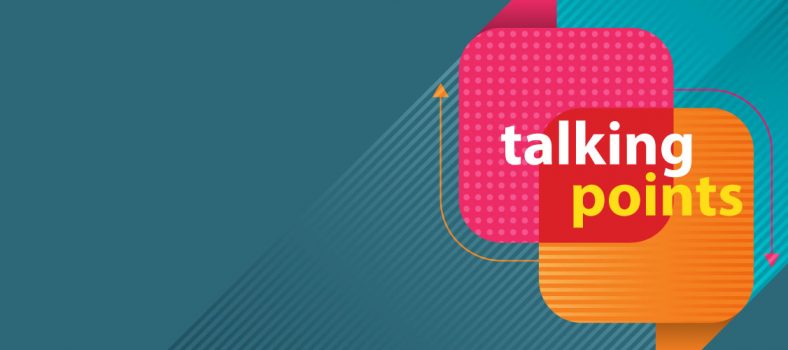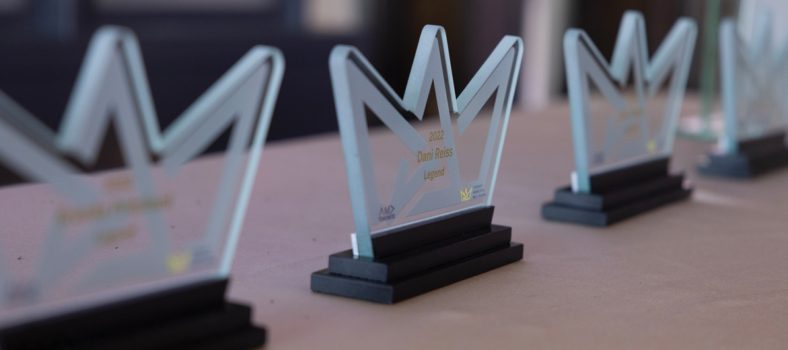Excerpts 2023 Thinkific’s Learning Trends Report
The creator economy is a juggernaut, valued at over $100 billion and employing as many as 300 million people worldwide. And while an exclusive tier of popular creators continues to generate the most revenue (and headlines), a creator middle class has quietly emerged in the background.
This segment of creators is less motivated by fame and money than they are by intrinsic factors, including self-expression, and the ability to work on projects that give them a sense of meaning and purpose like sharing knowledge. They seek to make a living through their content and intend to operate as a business. In fact today, nearly twice as many creators want to become business owners versus achieving some celebrity influencer status.
The E-learning industry is expected to be worth more than $460 billion by 2026. That’s a big pie that can be sliced into a lot of pieces. There’s more than enough room for many people who want to create a steady, sustainable and scalable business — one that’s resistant to upstream factors.
Technological innovation is happening at a rate that is difficult to comprehend. Research suggests that technical skills now have a half-life of five years, and the more technical skill, the shorter the lifespan. To thrive in a rapidly evolving, content-saturated landscape, creators need to cultivate different connections to their communities. These connections need to be solid enough to withstand the next internet earthquake.
As part of its 2023 Digital Learning Trends Report, Thinkific surveyed over 2,000 people in the US and spoke directly with successful creators to understand current trends in digital learning, side, hustles, and the creator economy. Its hoped that this report will help people create and build, solid, sustainable businesses doing what they love in 2023 and beyond.
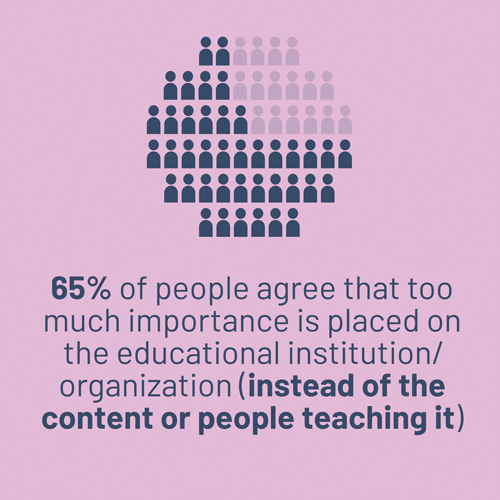 Microlearning emerges as a solution for life on the go as we all recognize that time is the ultimate limited resource. We are in a golden era for e-learning. Just look at the many headlines about Gen Z’s use of TikTok as a search engine. The last few years have turbocharged interest and participation, and there’s never been more tools and assets available to creator educators. But the one resource we’re all lacking is time. As we return, to pre-pandemic levels of activity, any time for learning we do have will have to be squeezed in around work, appointments and commutes.
Microlearning emerges as a solution for life on the go as we all recognize that time is the ultimate limited resource. We are in a golden era for e-learning. Just look at the many headlines about Gen Z’s use of TikTok as a search engine. The last few years have turbocharged interest and participation, and there’s never been more tools and assets available to creator educators. But the one resource we’re all lacking is time. As we return, to pre-pandemic levels of activity, any time for learning we do have will have to be squeezed in around work, appointments and commutes.
It’s a big business, too. The mobile learning market is poised to nearly quadruple in value by 2026 up to $155.8 billion from $42.2 billion in 2021. But just because our time is scarce doesn’t mean that we don’t prioritize learning. That’s where microlearning comes in.
Compared to traditional models, bite-size classes — anything under 10 minutes in length counts, but think closer to the 30-to-60-second mark — are not only more convenient, but they are also more effective at boosting long-term retention. In our survey, the second most cited benefit to short-term form learning after discovering new topics (41 percent) was that it’s easier to absorb short-term short-form content (26 percent).
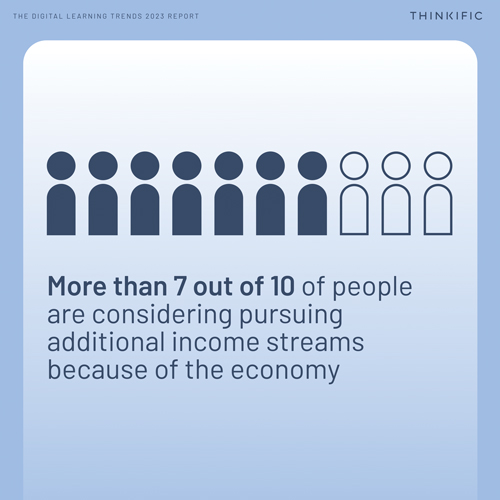 The growth of microlearning is incredible news for creators who are early in their entrepreneurial journey. Shorter learning experiences are cheaper, faster, and easier to produce, meaning you can get a lot of content out into this world with limited resources. This is particularly valuable as you begin your business journey because you’ll be iterating and testing quite a bit. It’s also a lot easier to pivot on a course topic or lesson when you’ve invested hours into it instead of weeks.
The growth of microlearning is incredible news for creators who are early in their entrepreneurial journey. Shorter learning experiences are cheaper, faster, and easier to produce, meaning you can get a lot of content out into this world with limited resources. This is particularly valuable as you begin your business journey because you’ll be iterating and testing quite a bit. It’s also a lot easier to pivot on a course topic or lesson when you’ve invested hours into it instead of weeks.
The other important thing that microlearning brings to new creators is a mechanism for audience growth. Yes, microlearning is a trend to consider regarding paid learning products. But more creators should be using microlearning as a way to grow and engage their audience. Take Miss Excel, for example. She used microlearning on TikTok to build a massive audience (currently over 875,000 followers). Her content is concise, free and highly informative — all the microlearning staples.
If you’re an established business with existing learning products, you might be wondering if you really need to embrace microlearning. Not every trend is right for every business but microlearning is firmly aligned with peoples’ shortening attention spans and their growing reliance on mobile devices.
If you have an established course driven by long lessons, you may be missing out on a segment of your audience who simply no longer wants to learn that way. This is especially true if your target market includes millennials and GenZ. The use of microlearning could expand your audience in the segments, helping you scale. Also, microlearning doesn’t require you to start from scratch. If you have established learning products, you may be able to reuse portions of the content or even split up lessons into more digestible chunks.
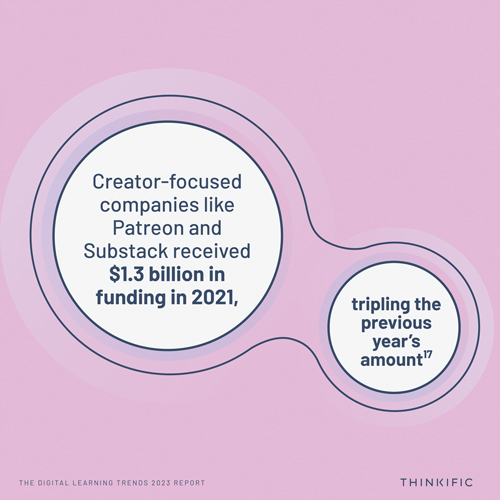 Miss Excel does exactly this. She pulls quick tips from her lessons and if people want more information – which they often do: our survey showed 57 percent of people decided to learn about a topic after seeing short-form content about it on social media – then her entire course is just waiting in the wings.
Miss Excel does exactly this. She pulls quick tips from her lessons and if people want more information – which they often do: our survey showed 57 percent of people decided to learn about a topic after seeing short-form content about it on social media – then her entire course is just waiting in the wings.
Shortening your lessons not only helps learners absorb and retain content better, it can also increase your discoverability. By featuring more, shorter lessons on your website, you expose visitors and search engines to a higher number of keywords that might trigger interest or a sale
While, creator entertainers produce content anchored in the creator’s, performance, or influence, creator educators create content designed to share knowledge or drive impact. Although the algorithm rewards the top tier of creators – a thin segment of superstar entertainers who retain a vast majority of revenue – the model is changing.
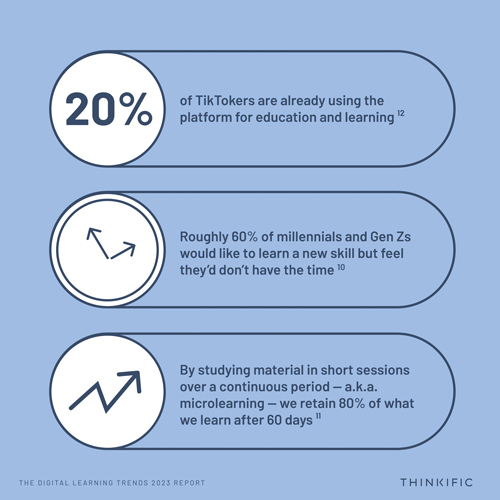 Platforms that allow direct payment like Substack. Patreon and Twitch, have seen skyrocketing investments so monetizing your own (already heavily engaged) audience is increasingly accessible. And people are hungry for it. One big way creators are looking to build sustainable revenue is through digital learning products, which, along with books and podcasts, are expected to see the biggest year-over-year growth in creation.
Platforms that allow direct payment like Substack. Patreon and Twitch, have seen skyrocketing investments so monetizing your own (already heavily engaged) audience is increasingly accessible. And people are hungry for it. One big way creators are looking to build sustainable revenue is through digital learning products, which, along with books and podcasts, are expected to see the biggest year-over-year growth in creation.
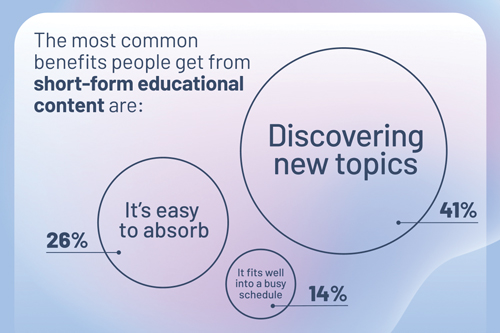 By focusing on sharing knowledge and driving impact, creators, and educators, build trusting, long-lasting relationships with their audiences. That kind of community is much more sustainable and can be monetized over time. Plus unlike entertainment, education isn’t a zero-sum game: You’re not battling for the biggest share of eyeballs. Look for educators to form a steady and sustainable backbone of the creator middle class.
By focusing on sharing knowledge and driving impact, creators, and educators, build trusting, long-lasting relationships with their audiences. That kind of community is much more sustainable and can be monetized over time. Plus unlike entertainment, education isn’t a zero-sum game: You’re not battling for the biggest share of eyeballs. Look for educators to form a steady and sustainable backbone of the creator middle class.
Excerpted from Thinkific’s 2023 Digital Learning Trends Report. Thinkific is a Vancouver-based company that enables entrepreneurs to create, market, sell, and deliver their own online courses. Their mission is to revolutionize the way people learn and earn online by giving them the tools they need to turn their expertise into a sustainable business that impacts both them and their audience.

